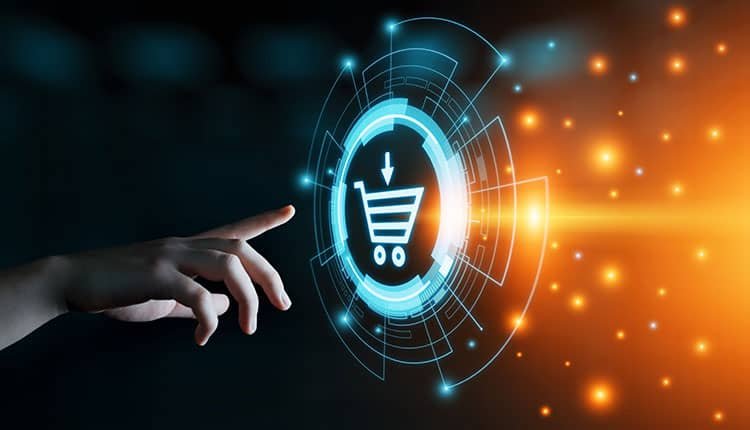Ecommerce has seen substantial growth over the past decade, with global retail ecommerce sales reaching $5 trillion in 2021. The COVID-19 pandemic further accelerated adoption as consumers moved online for their shopping needs when physical stores were closed. However, building a scalable and custom ecommerce solution is still challenging for many businesses. This is the problem Shopify aims to solve.
In this post, we’ll explore Shopify’s origin story, its core product offerings, the developer ecosystem it has created, and the future direction of the company. My goal is to illustrate how Shopify has had an outsized impact in advancing e-commerce by empowering entrepreneurs and developers to build, run, and scale retail businesses online easily.
The Origins of Disrupting Traditional Ecommerce
Shopify was started in 2004 by founders Tobias Lütke, Daniel Weinand, and Scott Lake after they failed to find an appropriate ecommerce platform for their online snowboard store. The offerings at the time were expensive, slow, and cumbersome to customize. They realized there was a huge unmet need for a service that makes setting up an online store simple and affordable.
The initial prototype took months to create in Ruby on Rails. The platform provided merchants with CMS capabilities to manage their inventory, product listings, orders, and customers through an intuitive web interface. By abstracting away the complexities of payments, shipping, and fulfillment, Shopify allowed business owners to focus on sales and marketing.
This core value proposition showed immense demand, with the first version attracting thousands of merchant signups purely driven by word-of-mouth. Over the years, Shopify iterated the product further based on user feedback and merchant pain points. It also expanded the platform’s capabilities dramatically to support more complex ecommerce use cases.
Today, Shopify powers over 2 million businesses, from small indie brands to large Fortune 500 companies like GE, Budweiser, and Nestle. The startup that originally aimed to disrupt early hosted ecommerce solutions like Yahoo Stores and MonsterCommerce has itself become an industry leader, now valued at over $140 billion.
Simplifying Online Store Management
At its heart, Shopify provides a cloud-based, multi-channel platform that handles everything from creating storefronts to managing day-to-day operations for running an ecommerce business. Let’s go through some of the core features:
Store Builders and Themes
Shopify makes it easy to build professional-looking storefronts without any design or development skills. Using a catalog of free and paid themes, you can customize the look and feel of your site through an intuitive web interface. More advanced customization for branding your site to stand out is also available.
Product and Inventory Management
The dashboard provides easy organization and tracking of your inventory. Bulk upload products, track qty, manage variations, etc. As orders come in, inventory levels automatically update in real-time.
Integrated Payment Processing
Shopify Payments allows accepting transactions seamlessly using credit cards, Apple Pay, etc., without setting up a payment gateway separately. You can enable one-click checkout to increase conversion rates. Reporting provides insights into sales, taxes, and fees across payment methods.
Shipping and Fulfillment
Print shipping labels and tracking info automatically. Connect to shipping carriers like USPS, FedEx, etc. Use Shopify Fulfillment Network to outsource warehousing and delivery operations. Rules engine supports free shipping discounts, delivery time estimates etc.
Point of Sale Capabilities
Shopify POS extends ecommerce capabilities to brick-and-mortar stores. Supports in-person selling, accepting payments through reader hardware, and managing inventory across channels in one dashboard.
Marketing and Analytics
View traffic analytics for things like sales funnels, UX friction, and conversions. Email marketing automation helps run campaigns, customer segmentation, etc. Integrates with channels like Google/Facebook ads to run targeted promotions.
Omnichannel Selling
Sell across multiple sales channels like online stores, POS, mobile, marketplaces, social networks, etc., from one unified operational view, improving efficiency.
The platform takes care of these complex, interdependent business areas through deep integration – providing a one-stop solution for merchants to manage their operations.
Powering Ecommerce for Different Business Stages
Now that we’ve seen Shopify’s extensive feature set, it’s important to call out how the platform caters to businesses across different stages:
Early-Stage Merchants
For entrepreneurs starting, Shopify Lite at $9/month provides the basics like cart, payments, and marketing plugins. As the business scales to require more capabilities, upgrading to higher Shopify plans is seamless.
Growing Businesses
The $29/month Basic Shopify plan provides everything from secure hosting to inventory and order processing workflows required by small but growing online retailers. More sales channels, staff accounts, and automation capabilities are available as you upgrade further.
Large Enterprises
For sophisticated use cases supporting huge catalogs, custom workflows, and global distribution – Shopify Plus pricing starts at $2000/month, providing enterprise-grade support, volume discounts, and custom enterprise integrations.
This way, Shopify is able to onboard entrepreneurs just starting while keeping capabilities advancing to meet the needs of the world’s largest retailers as they scale up.
Lowering Barriers Through App Ecosystem
A major driver of Shopify’s dominance has been making robust ecommerce accessible even to non-technical users. But as merchants need to get more advanced, they inevitably require customizations and extensions beyond base features.
Shopify tackled this by fostering a thriving app ecosystem with over 5000+ apps to extend platform capabilities. Apps are typically developed by independent developers or agencies that keep 80% of their revenue, while Shopify takes a 20% cut. Hire Shopify Developers who are well-versed in the following app categories –
Marketing Apps
Email marketing, loyalty programs, SEO optimization, contests, etc., help merchants market their brands more effectively. Apps like Privy provide free and paid tools to increase conversion rates.
Shipping Apps
Additional shipping integrations like Shippo, shipping rate price rules, batch label printing, etc., streamline logistics. Apps like Easyship make international shipping simpler.
Accounting Apps
Apps like Quickbooks and Xero integrate financial reporting and sync taxes into accounting pipelines. Makes business analytics more insightful.
Customer Service Apps
Live chat and SMS messaging help desk systems like Zendesk and analytics improve supporting customers at scale.
The app ecosystem removes friction for merchants to get custom ecommerce capabilities built – all neatly integrated into their Shopify dashboard, allowing them to focus on their products and services.
The Future of Modern Commerce
Shopify has already had a tremendous role in paving the way for SMBs to get online quickly and cost-effectively. But the company is just getting started in innovating future commerce models. Some glimpses we’ve seen:
Direct-to-consumer models
Improving support for vertically integrated D2C businesses that are now proliferating on social channels like TikTok. These include capabilities like bulk order fulfillment.
Sustainability enablement
Features like carbon offsetting shipping, eco-friendly packaging, and renewable energy usage tracking assist environmentally conscious merchants.
Cryptocurrency payments
Fraud-resistant blockchain payments are gaining wider adoption. Shopify provides native support for transactions in popular cryptocurrencies like Bitcoin and Ethereum.
Machine learning applied in commerce.
Shopify’s R&D investments show commitment towards making ML not just a buzzword but an actionable driver of value. Illustrative examples include optimizing marketing spend, personalized recommendations, predictive inventory planning, etc. applied directly to the platforms merchants already use.
Multi-model fulfillment
Whether same-day shipping, in-store pickup, or gig platforms for delivery, Shopify is bridging online and offline channels uniquely. Omnichannel management from one admin allows retailers to meet rising consumer delivery expectations.
Global commerce expansion
Features like Shopify Markets and translations aim towards every merchant being able to sell internationally. Overcoming language and payment barriers can unlock huge growth potential.
We’re likely still in the early phases of how ecommerce will evolve. But Shopify has positioned itself as the platform spearheading that innovation by minimizing the complexity of business operations for retailers. Enriching merchant success and power is a north-star metric that aligns Shopify’s business incentives with revolutionizing commerce.
Final Words
Shopify has played an impressive role in enabling entrepreneurs who need more technical expertise to set up online stores and manage day-to-day ecommerce operations. Its app ecosystem also allows customizing niche capabilities through one unified platform.
With Shopify already supporting over 2 million businesses and counting, it is cementing itself as the cloud ecommerce platform of choice for retailers of all sizes. The company’s continued emphasis on simplifying entrepreneurship and global commerce at scale promises exciting innovation still to come.








Leave a comment